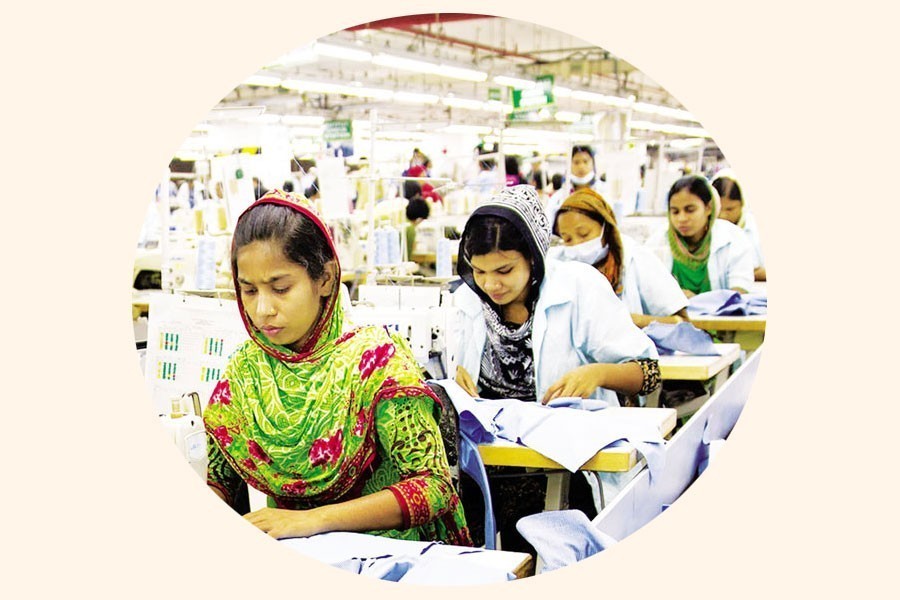The question whether foreign direct investment (FDI) in the country's readymade garment (RMG) sector is a boon or not has not been answered in clear terms by concerned quarters, including the industry people. There are foreign collaborations, but not in the form of large-scale FDI. However, the government's efforts to attract FDI in both within and outside the Export Processing Zones (EPZs) is not industry-specific, and hence not meant to exclude any specific manufacturing sector beyond the scope of investment.
In fact, the government is particularly interested to lure relocation of factories from countries like China, Japan and Korea in the wake of the increasing wages in these counties on the one hand and on the other, their search for suitable locations for both relocation as well as setting up of export-oriented industries. Given the cheap labour and abundant workforce, Bangladesh, despite many of its perennial odds, is quite an attractive location. And of all the sectors of manufacturing, apparel making --- Bangladesh's key area of expertise --- has sound reasons to attract overseas investors. The gains, observers believe, will be multiplier across a range of business activities for the investors. The obvious question that comes to the fore, is this going to hit the local industry?
Newspaper reports indicate that a move is currently on towards facilitating foreign investment in readymade garment industry outside the export processing zones (EPZs). The issue, reportedly under consideration of the government, has already received opposition from the local apparel manufacturers and exporters. Understandably, the government will have to settle the score first with the local manufacturers and find a way out so as not to render things injurious to them.
It can well be assumed that much of the concerns of the local manufacturers stem from the fear that if the government allows unconditional approval to foreign investment in the RMG sector, there might be serious a competition in the low-end segment products -- the key strength of Bangladesh's apparel industry. This fear is further heightened by the fact that China has already made it known that producing low-end apparels is no longer viable in that country, because of soaring wages. So, provided with adequate opportunities, chances of relocation of Chinese factories for low-end products are high.
In view of this, stakeholders are more inclined to confine foreign investment in the garment sector to the EPZs only. As for investment outside the EPZs, they reportedly agreed some time ago to accept foreign investment outside the EPZs on condition that those factories will produce fashion items for non-traditional and new markets like Russia, Brazil, China, South Africa, India, Australia and Mexico.
The country's RMG sector is now in a state of uncertainty, if not of panic. Although exports did not suffer any major setback due to the fallout of the Covid 19 and the Russia-Ukraine war on global markets and despite some minor hiccups, export orders are coming to Bangladesh and the sector did demonstrate strong resilience. Eventually it paid off and helped overcome the problems of supply chain disruptions and market instability. However, in order to further strengthen the foundation of the industry, experts including foreign buyers stress upon the need for expanding and diversifying the manufacturing base in ways that will be beneficial for the local industry and the country's economy. Is FDI the right recipe in this regard?
There are quarters in the country who fear foreign investment might pose a genuine threat to the sector. Looking at the scenario simplistically may not help, as there are counter arguments that may reveal that the fear of the local manufacturers is more from better wage prospects for workers in the foreign factories, which in turn will have its effect on the local factories. The local manufacturers at the moment are rigid in their stand on wages. So, according to them, inviting foreign investment in the basic and low-end segment of apparels would call for undesirable chaos. In this context, critics are at ease to raise the all-important question: if foreign investors can afford to pay better and still make profits, why not the locals?
In the past few years, a good number of high-level business delegations visited Bangladesh, primarily with the objective of exploring prospects of investment, especially in relocating some of their burdensome leather and garment factories in Bangladesh. The government seemingly received some favourable signals, which might translate into pressure also. It is, however, not yet clear whether interested investors are eying the basic and low-end segment alone.
There are quarters which believe that allowing foreign investment in the RMG sector might bring a change for the better in the overall work culture of the industry. Besides, it might bolster backward and forward linkage industries by way of increased works as well as technological improvements.
The issue thus calls for consideration of the pros and cons before arriving at a decision. Taking the Bangladeshi stakeholders -- mainly the local manufacturers -- on board would be a prudent step in that direction. Besides, views of the think tanks may also be taken into consideration.
wasiahmed.bd@ gmail.com


